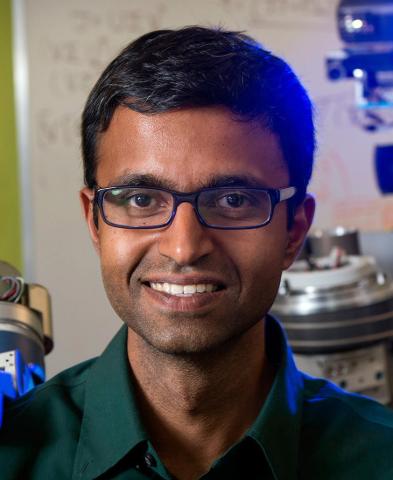event
IRIM Robotics Seminar—Siddhartha Srinivasa
Primary tabs
The Institute for Robotics and Intelligent Machines presents “Physics-based Manipulation with and Around People” by Siddhartha Srinivasa of the University of Washington. The event will be held in the TSRB Banquet Hall from 12:15-1:15 p.m. and is open to the public.
Abstract
Robots manipulate with super-human speed and dexterity on factory floors, but they fail even under moderate amounts of clutter or uncertainty. However, human teleoperators perform remarkable acts of manipulation with the same hardware. My research goal is to bridge the gap between what robotic manipulators can do now and what they are capable of doing.
What human operators intuitively possess that robots lack are models of interaction between the manipulator and the world that goes beyond pick-and-place maneuvers. I will describe our work on nonprehensile physics-based manipulation that has produced simple but effective models, integrated with proprioception and perception, enabling robots to fearlessly push, pull, and slide objects, and reconfigure clutter that comes in the way of their primary task.
Human environments are also filled with humans. Collaborative manipulation is a dance, demanding the sharing of intentions, inferences, and forces between the robot and the human. I will also describe our work on the mathematics of human-robot interaction that has produced a framework for collaboration using Bayesian inference to model the human collaborator, and trajectory optimization to generate fluent collaborative plans.
Finally, I will talk about our new initiative for assistive care that focuses on marrying physics, human-robot collaboration, control theory, and rehabilitation engineering to build and deploy caregiving systems.
Bio
Siddhartha Srinivasa is the Boeing Endowed Professor in the School of Computer Science & Engineering at the University of Washington. He works on robotic manipulation with the goal of enabling robots to perform complex manipulation tasks under uncertainty and clutter, with and around people. To this end, he founded the Personal Robotics Lab in 2005.
Srinivasa has been a primary investigater on the Quality of Life Technologies NSF ERC, DARPA ARM-S, and the CMU CHIMP team on the DARPA DRC. He is also passionate about building end-to-end systems (HERB, ADA, HRP3, CHIMP, Andy, and others) that integrate perception, planning, and control in the real world. Understanding the interplay between system components has helped produce state-of-the-art algorithms for object recognition and pose estimation (MOPED), and dense 3D modeling (CHISEL, now used by Google Project Tango).
Srinivasa received a B.Tech in Mechanical Engineering from the Indian Institute of Technology Madras in 1999, an M.S. in 2001, and a Ph.D. in 2005 from the Robotics Institute at Carnegie Mellon University.
Groups
Status
- Workflow status: Published
- Created by: Josie Giles
- Created: 12/22/2017
- Modified By: Josie Giles
- Modified: 01/25/2018
Categories
Keywords
Target Audience

